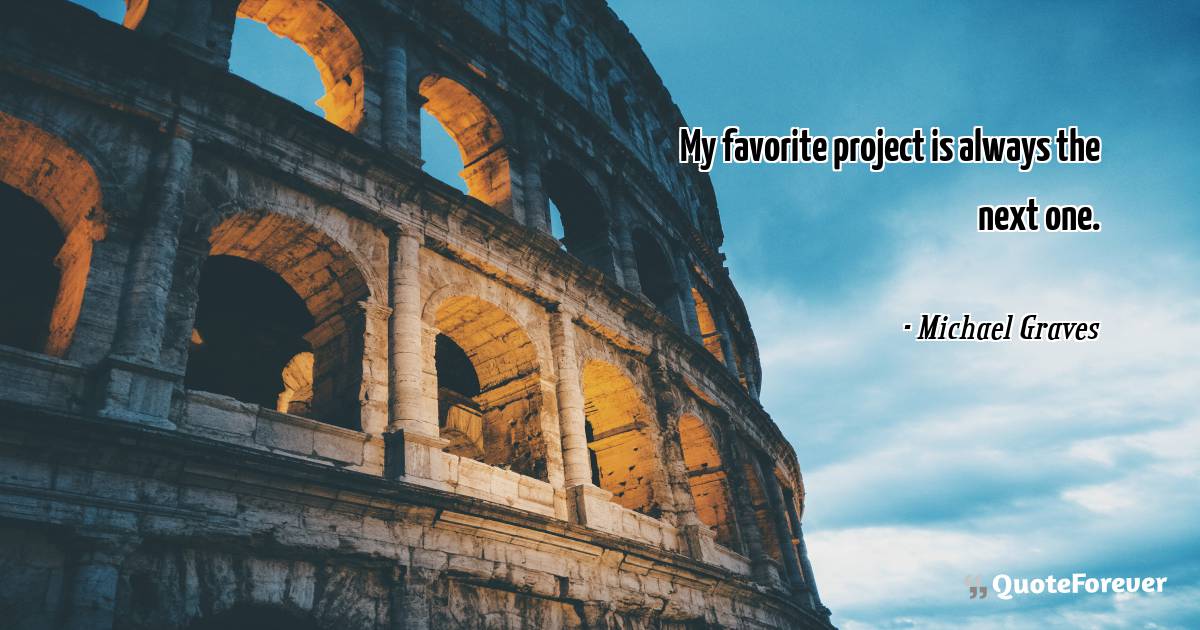Michael Graves Quotes - Page 1
Stay Connected
Picture Quotes Maker
Make Your Picture Quotes, Download and ShareRelated Architect Authors
- Zaha Hadid
Architect
Tuesday, Oct 31, 1950
Thursday, Mar 31, 2016 - Yoshio Taniguchi
Architect
- Witold Rybczynski
Architect
Monday, Mar 01, 1943
- Willis Polk
Architect
Thursday, Oct 03, 1867
Wednesday, Sep 10, 1924 - William Wardell
Architect
Wednesday, Mar 03, 1824
Sunday, Nov 19, 1899 - William Lethaby
Architect
Sunday, Jan 18, 1857
Friday, Jul 17, 1931 - William J. Mitchell
Architect
Friday, Dec 15, 1944
Friday, Jun 11, 2010 - Will Alsop
Architect
Friday, Dec 12, 1947
- Walter Gropius
Architect
Friday, May 18, 1883
Saturday, Jul 05, 1969 - Vittorio Gregotti
Architect
- Toyo Ito
Architect
Sunday, Jun 01, 1941
- Tom Turner
Architect
Sunday, May 05, 1946
- Tom Kundig
Architect
Saturday, Oct 09, 1954
- Thomas S. Tait
Architect
Sunday, Jun 18, 1882
Sunday, Jul 18, 1954 - Thom Mayne
Architect
Wednesday, Jan 19, 1944
Popular Topic Tags
Top Authors
- Vince Lombardi
Football Player
Wednesday, Jun 11, 1913
Thursday, Sep 03, 1970 - Niccolo Machiavelli
Historian
Monday, May 03, 1469
Tuesday, Jun 21, 1527 - Abraham Lincoln
16Th U.S. President
Sunday, Feb 12, 1809
Saturday, Apr 15, 1865 - Aristotle
Philosopher
Thursday, Jan 01, 1970
Thursday, Jan 01, 1970 - John Locke
Philosopher
Sunday, Aug 29, 1632
Tuesday, Oct 28, 1704 - Stephen Covey
Author
Monday, Oct 24, 1932
Monday, Jul 16, 2012 - George Orwell
Novelist
Thursday, Jun 25, 1903
Saturday, Jan 21, 1950 - John Muir
Author
Saturday, Apr 21, 1838
Thursday, Dec 24, 1914 - Martin Luther King, Jr.
Civil Rights Activist
Tuesday, Jan 15, 1929
Thursday, Apr 04, 1968 - W. Edwards Deming
Statistician
Sunday, Oct 14, 1900
Monday, Dec 20, 1993 - Thomas Aquinas
Priest
Tuesday, Jan 28, 1225
Wednesday, Mar 07, 1274 - Thomas Jefferson
3Rd US President
Saturday, Apr 13, 1743
Tuesday, Jul 04, 1826 - Carl Jung
Psychiatrist
Monday, Jul 26, 1875
Tuesday, Jun 06, 1961 - Isaac Newton
Physicist
Sunday, Jan 04, 1643
Monday, Mar 31, 1727 - Ralph Waldo Emerson
Essayist
Wednesday, May 25, 1803
Thursday, Apr 27, 1882
